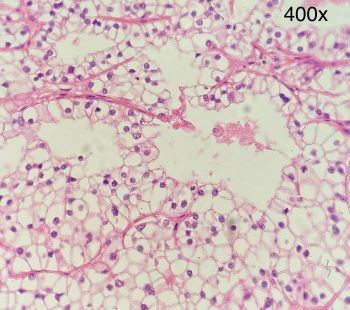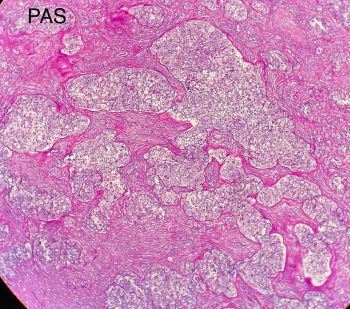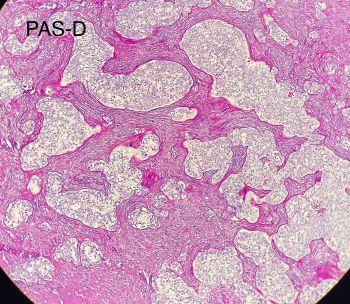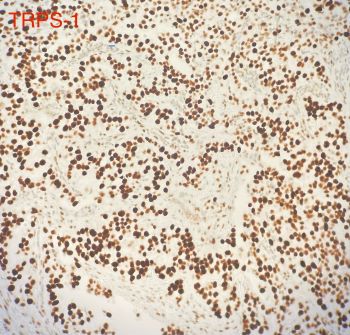Case History
A 44-year-old female with a past medical history of both breast and thyroid cancer at age 32 (both appropriately treated) now presents with an acetabular mass and pathologic fracture.




Given the H&E morphology and stain results presented below, what is the correct diagnosis?
A. Metastatic clear cell renal cell carcinoma
B. Clear cell carcinoma
C. Metastatic breast carcinoma
D. Metastatic papillary thyroid carcinoma
Correct Answer: C. Metastatic breast carcinoma
Discussion:
This is metastatic breast carcinoma, more specifically the glycogen-rich clear cell pattern of invasive breast carcinoma, NOS (ductal carcinoma). First described in 1981 and formerly classified as its separate entity, it was reclassified as a variant/pattern of ductal breast carcinoma in more recent versions of the WHO. It is characterized by the appearance of polygonal tumor cells with voluminous clear cytoplasm caused by the abundant glycogen. The glycogen is readily apparent on PAS staining and is digested using diastase. It is important to rule out prominent histologic mimics and, in this case, PAX-8 and Carbonic anhydrase IX IHC were negative, mitigating against a diagnosis of clear cell renal cell carcinoma. This tumor otherwise typically stains like any other ductal breast carcinoma; in this case, TRPS1, GATA 3, mammaglobin, ER, and PR were positive, confirming breast origin.
Case contributed by: Daniel Jackson, M.D., Surgical Pathology Fellow, UAB Pathology